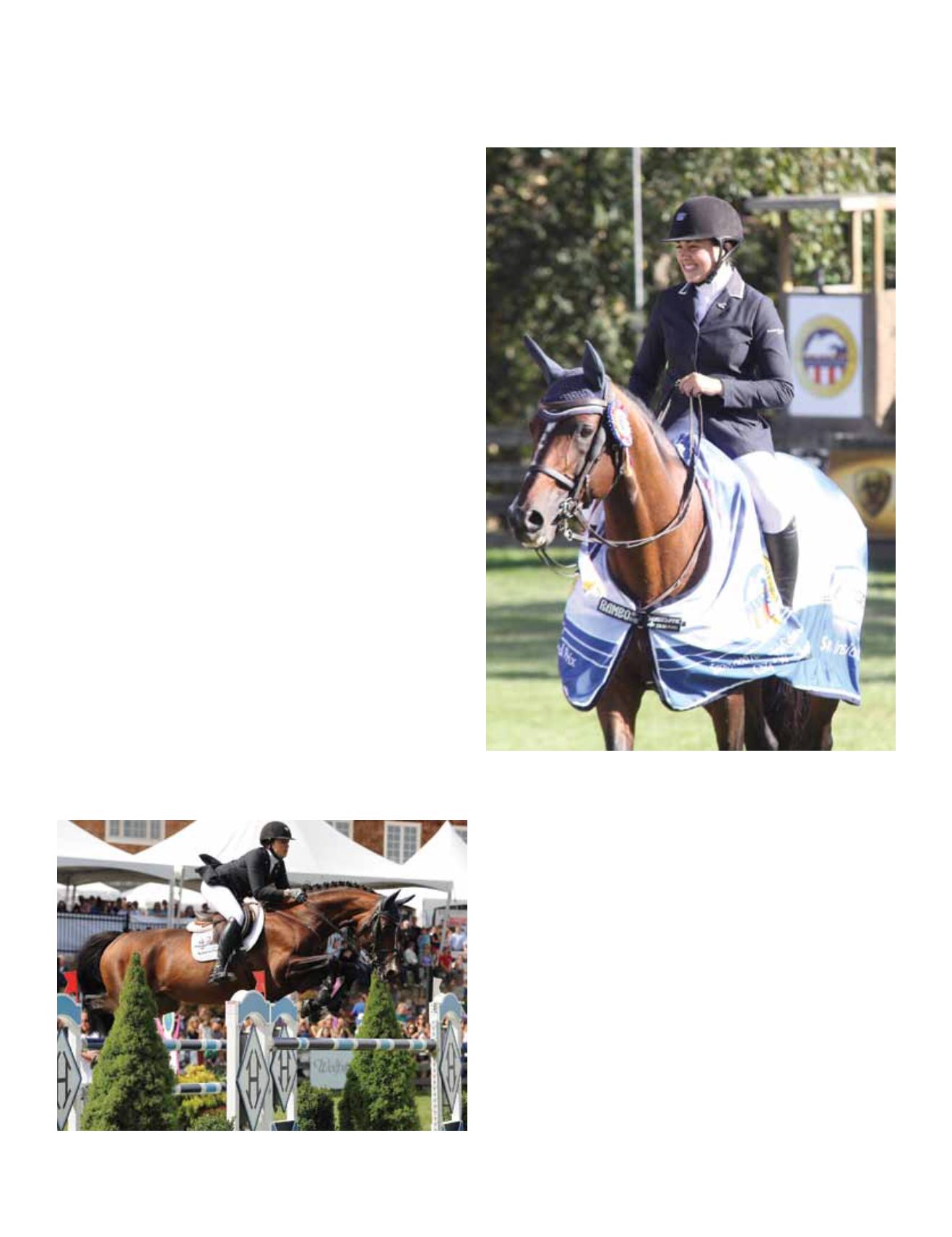
106 SIDELINES NOVEMBER 2013
FOR HORSE PEOPLE • ABOUT HORSE PEOPLE
Getting the Most Out of Your Course Walk
By Brianne Goutal
Each rider has his or her own routine before a competition
and people often ask me about mine. One of the most important
steps for preparing myself before a class is walking the course.
When competing in the jumpers, thoroughly walking the course
is essential because each one has its own distinct aspects that
make it unique, and knowing these ahead of time can be incredibly
helpful.
Without fully examining the course, you are essentially going in
blind, which can lead to unnecessary complications. The better
you know it, the higher your chances of clearing it. However, to
get the most out of walking a course, you need to know what to
look for. Below are my steps for what I take into account when I
walk a course.
1. Class.
The first thing I take into consideration is the type of
class. Is it a speed, power and speed or jump off? This is really
the foundation for how to approach the course and how you will
jump it.
2.
Height.
You may be thinking, “Isn’t this noted by the type
of class?” Unfortunately the height of the jumps is not just what
the class is listed as. It may say 1.45m, but there are such things
as “big” and “small” 1.45m. Especially depending on the class
format, the track can be very big or quite small, and this is a huge
component a rider must prepare for.
3. Combinations.
Doubles and triples normally cause the most
complications on the course. Every horse has a combination that
they jump better than others. I like to know what I am in for and
pay close attention to what I’ll have to set up for to ensure there
are no surprises when I get in the ring.
4. Spook factors.
You never know where jumps will be placed
on the course – next to a tree, a liver pool, water feature, etc.
Spooky surroundings can sometimes distract your horse and make
a simple jump complicated and a hard obstacle or combination
very, very difficult!
5.
Technicalities.
Assess the especially hard or technical
aspects of the course. Like with the combinations, it is good to
know what you need to be most ready for so that you can prepare
accordingly.
6. Timer placement
.
Are they three strides after the last fence?
Does the speed phase of a power and speed start while you’re in
the air of the jump before? This can make all the difference.
This may seem like a lot of factors to watch for, but they can
make the difference between clearing the course or not. When
I am walking a course, I try to get an overall feel for it - how it is
laid out and the difficulties that it could possibly present. By taking
these steps and making note of all these aspects, I know how to
best prepare myself and my horse, both mentally and physically.
Everybody’s a little bit different; you have to figure out what
works best for you. Take a look at my steps and pull from it what
might help you when you’re walking the course and adapt it to fit
your routine to prepare you best. And most important of all, enjoy
your time in the ring!
About the writer: Brianne Goutal is a 2012 graduate of Brown University and
professional show jumper. She made history by becoming the only person to win all
four junior equitation finals.
e
Brianne and Nice de Prissey in North Salem, New York.
Photo by Carrie Wirth
Brianne and Nice de Prissey on their way to winning the
$200,000 American Gold Cup CSI 4*-W, presented by Suncast.
Photo by The Book LLC 2013


